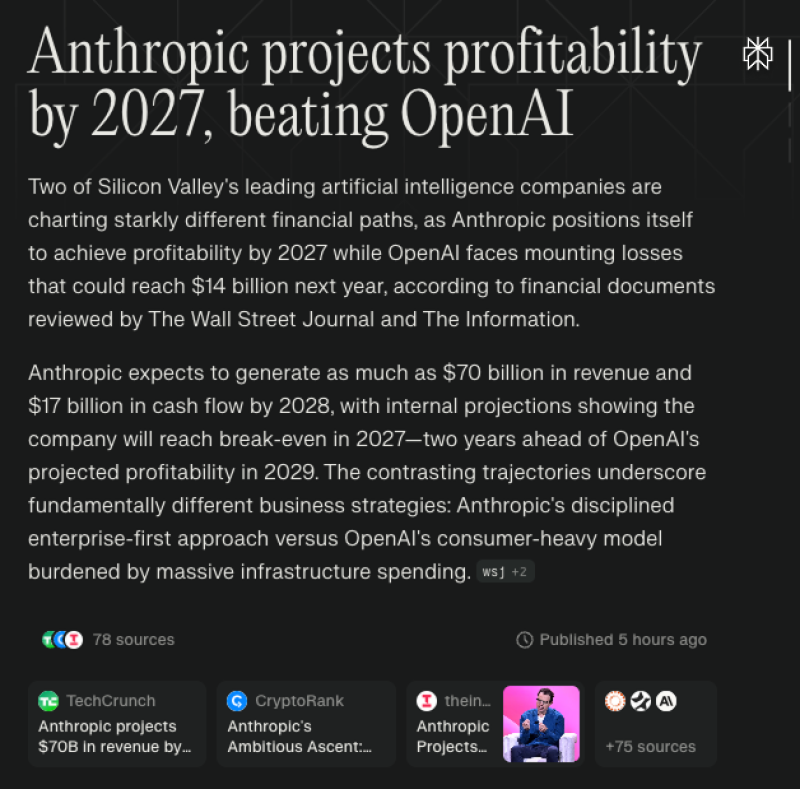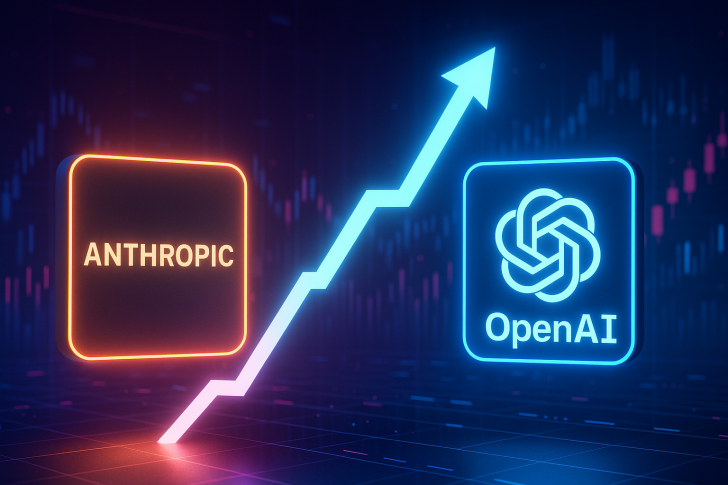The AI race is heating up, and there's a new twist in the competition. While OpenAI dominates headlines with ChatGPT, Anthropic is quietly building something different—a business model that might actually make money. Recent financial projections suggest the company behind Claude could hit profitability by 2027, beating OpenAI by two years.
The numbers come from internal documents reviewed by The Wall Street Journal and The Information, and they tell a pretty clear story. Anthropic isn't trying to serve everyone for free—it's focused on businesses willing to pay for Claude's capabilities. That means steady revenue from API usage and enterprise integrations, rather than burning cash to support millions of non-paying users.
The Infrastructure Advantage
What really sets Anthropic apart is how it's handling infrastructure. Instead of pouring billions into proprietary data centers like OpenAI, the company spreads its workload across Google Cloud, AWS, and Nvidia's ecosystem.

This multi-cloud approach keeps costs down and provides flexibility. When you're not locked into one provider, you can optimize for efficiency and avoid the capital strain that's plaguing competitors.
The Numbers
- Anthropic expects to reach profitability in 2027, while OpenAI isn't projected to break even until 2029
- The company anticipates $70 billion in annual revenue and $17 billion in cash flow by 2028
- Around 80% of Anthropic's revenue comes from enterprise clients, not free consumer users
- OpenAI's losses could hit $14 billion next year due to heavy infrastructure costs and free-tier users
Two Different Strategies
OpenAI, meanwhile, is betting big on consumer growth. ChatGPT has massive reach, but that comes with massive costs. Serving millions of free users requires enormous compute resources, and the company's infrastructure investments are piling up losses. It's a different philosophy entirely—prioritize scale now, worry about profitability later.
Anthropic's approach is more measured. Claude powers workflows for companies that need reliable AI tools they can integrate into their operations. It's not flashy, but it works. The enterprise-first model generates recurring revenue and insulates the company from market swings. When your customers are businesses with budgets rather than consumers looking for freebies, your economics just look different.
What This Means for the Industry
If these projections hold up, we might be witnessing a shift in how AI companies are valued. The industry has spent years chasing user numbers and engagement metrics, but Anthropic is proving that sustainable growth and infrastructure efficiency matter too. Being first to profitability would send a strong signal that you don't need to lose billions to build a successful AI company.
The contrast is striking. One company is building for the masses with a consumer platform that costs a fortune to run. The other is building for businesses with a model that generates reliable income. Both strategies have merit, but only one is projected to be profitable by 2027. Whether that timeline proves accurate remains to be seen, but the underlying message is clear—Claude's enterprise footprint and Anthropic's disciplined approach might just redefine success in AI's next chapter.
 Saad Ullah
Saad Ullah

 Saad Ullah
Saad Ullah


